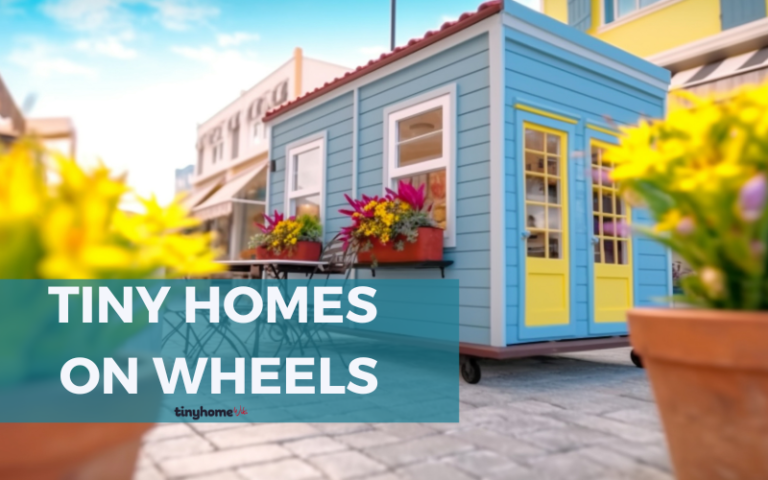Shipping Container Homes: A Cost-Effective and Sustainable Housing Solution
Shipping container homes have become increasingly popular as a unique and affordable housing option in recent years.
These homes are built using recycled or new shipping containers that are typically made of steel and are rectangular in shape.
They are sturdy, weather-resistant, and can be designed to fit the needs and preferences of the homeowner.
One of the benefits of shipping container homes is their affordability. They are often less expensive than traditional homes and can be customized to fit a range of budgets.
Additionally, they are eco-friendly, as they repurpose shipping containers that might otherwise go to waste.
Shipping container homes can also be built quickly, making them a great option for those who want to move into their new home as soon as possible.
Despite their unique design, shipping container homes can be just as comfortable and functional as traditional homes.
They can be designed to include all the necessary amenities, such as plumbing, electricity, and heating and cooling systems.
With their affordability, eco-friendliness, and versatility, shipping container homes are a great option for those seeking a unique and practical housing solution.
The Concept of Shipping Container Homes

The Concept of Shipping Container Homes
Shipping container homes are dwellings made from steel shipping containers repurposed for residential purposes.
Typically, the containers used for this purpose are large, reusable intermodal containers transporting goods across oceans. They are made of heavy-duty, corrosion-resistant steel, which makes them durable and long-lasting.
Using shipping containers for residential purposes has gained popularity recently due to their affordability, versatility, and eco-friendliness.
Shipping container homes can be customized to fit any style or design preference and can be constructed quickly and efficiently.
Additionally, they are a sustainable option for housing, as they repurpose existing materials that would otherwise go to waste.
One of the key benefits of shipping container homes is their affordability. The cost of a shipping container is significantly lower than the cost of traditional building materials, such as wood or brick.
Additionally, shipping container homes can be constructed quickly and efficiently, saving labor costs.
Another benefit of shipping container homes is their versatility.
Shipping containers can be stacked and arranged in various configurations, allowing endless design possibilities.
They can also be modified to include features such as windows, doors, and insulation, which makes them suitable for any climate or environment.
Overall, shipping container homes offer an affordable, versatile, and eco-friendly alternative to traditional housing.
With their durability, customization options, and sustainability, shipping container homes are becoming increasingly popular for those looking for a unique and affordable place to call home.
Benefits of Shipping Container Homes

Shipping container homes have become increasingly popular in recent years, and for good reason.
They offer numerous benefits over traditional homes, including cost efficiency, sustainability, flexibility, and mobility.
Cost Efficiency
One of the biggest advantages of shipping container homes is their cost efficiency.
Building a home from shipping containers can be significantly cheaper than building a traditional home.
According to the authority, you can build a complete, fully-finished shipping container home with similar square footage for less than half the cost of a traditional home.
In addition to the lower construction costs, shipping container homes can save money on heating and cooling.
The containers’ steel walls provide excellent insulation, which can help reduce energy costs.
Sustainability
Another benefit of shipping container homes is their sustainability.
By repurposing shipping containers, these homes are a great way to reduce waste and give new life to materials that would otherwise go to waste.
In addition, shipping container homes are often designed with sustainability in mind.
Many builders incorporate eco-friendly features like solar panels, rainwater collection systems, and energy-efficient appliances to reduce environmental impact.
Flexibility and Mobility

Shipping container homes are also incredibly flexible and mobile.
They can be easily customized to fit the needs and preferences of their owners. For example, containers can be stacked or arranged in different configurations to create unique living spaces.
In addition, shipping container homes can be easily transported.
This makes them a great option for those who want to live in different locations or travel frequently.
Some companies even offer container homes that are specifically designed to be portable and can be moved from one location to another with ease.
Overall, shipping container homes offer numerous benefits over traditional homes.
They are cost-efficient, sustainable, and flexible, making them an attractive option for a unique and practical living space.
Designing a Shipping Container Home
Designing a shipping container home requires careful planning, container selection, and adherence to design principles.
Here are some key considerations when designing your own shipping container home.
Planning
Before beginning the design process, it is important to have a clear idea of what you want your shipping container home to look like and how it will function.
Consider the number of bedrooms and bathrooms you need, the required living space, and any special features or amenities you would like to include.
It is also important to consider where your shipping container home will be. Factors such as climate, topography, and local building codes can all impact the design of your home.
Container Selection
When selecting containers for your home, choosing high-quality, structurally sound containers free from rust and other defects is important.
The most common sizes for shipping container homes are 20 and 40 feet long, 8 feet wide, and 8 1/2 feet tall.
Consider the orientation of the containers and how they will fit together to create the desired layout.
It is also important to consider the placement of doors and windows to maximize natural light and ventilation.
Design Principles
Design principles for shipping container homes include maximizing space, creating a cohesive design, and incorporating sustainable materials and features.
Some key design considerations include:
- Using open floor plans to maximize space and create a sense of flow
- Incorporating natural light through the use of skylights, windows, and glass doors
- Using sustainable materials such as bamboo flooring and recycled glass countertops
- Incorporating energy-efficient features such as solar panels and high-efficiency HVAC systems
By carefully considering these design principles and working with a knowledgeable architect or builder, you can create a beautiful and functional shipping container home that meets your unique needs and style preferences.
Building Process of Shipping Container Homes
Shipping container homes has become increasingly popular due to affordability, durability, and eco-friendliness.
While the building process may seem daunting, it can be broken down into three main stages: site preparation, construction, insulation, and interior design.
Site Preparation
Before construction can begin, the site must be properly prepared.
This includes clearing the land, leveling the ground, and ensuring proper drainage.
It is also important to obtain any necessary permits and approvals from local authorities before starting construction.
Construction
Once the site is prepared, the shipping container home construction can begin.
The first step is to lay the foundation, which can be done with a concrete slab or pier and beam system.
Next, the shipping containers are placed and secured to the foundation using steel reinforcements.
Windows and doors are then cut out of the containers, and any necessary welding is done to create larger living spaces.
Electrical and plumbing systems are installed, and the interior walls and ceilings are finished with drywall or other materials.
Insulation and Interior Design
Insulation is a crucial step in the building process, as it helps regulate the temperature inside the home and reduce energy costs.
There are several options for insulation, including spray foam, rigid foam, and fiberglass batts.
Once the insulation is in place, the interior design can be tackled. This includes choosing flooring, paint colors, and fixtures that fit the homeowner’s style and preferences. It is important to consider the limited space of a shipping container home and opt for multi-functional furniture and storage solutions.
Building a shipping container home requires careful planning and attention to detail.
However, it can be a cost-effective and sustainable housing option with the right preparation and construction techniques.
Legal and Safety Considerations
Several legal and safety considerations must be remembered when building a shipping container home.
This section will cover some of the most important ones, including building codes and regulations, structural integrity, insulation, and ventilation.
Building Codes and Regulations
Before starting any construction on a shipping container home, it is important to research and understand the building codes and regulations in the local area.
These codes vary depending on the city, county, or state, so checking with the appropriate authorities is crucial to ensure compliance.
Some common regulations that may apply to shipping container homes include property zoning, mobile, manufactured, modular building codes, deed restrictions, and HOA rules.
It is also important to consider the regulating entities, such as municipal and county governments, that oversee building and construction in the area.
Structural Integrity
One of the most important safety considerations when building a shipping container home is ensuring the structural integrity of the containers themselves.
Shipping containers are designed to withstand harsh conditions at sea, but they may not be suitable for use as a permanent living space without modification.
To ensure structural integrity, it is important to work with a qualified contractor who has experience in building with shipping containers.
The containers should be properly reinforced and anchored to the foundation to prevent shifting or collapse.
Insulation and Ventilation
Another important consideration for safety and comfort is insulation and ventilation.
Shipping containers are made of metal, which can become extremely hot or cold depending on the weather.
Proper insulation can help regulate the temperature inside the container and prevent condensation, which can lead to mold and mildew.
Ventilation is also important to ensure proper airflow and prevent the buildup of harmful gases and chemicals.
This can be achieved through windows, vents, and fans.
In summary, when building a shipping container home, it is important to research and understand the local building codes and regulations, ensure the structural integrity of the containers, and address insulation and ventilation to ensure safety and comfort.
Case Studies of Shipping Container Homes
Shipping container homes have become increasingly popular due to their affordability, sustainability, and versatility.
A few case studies showcase how shipping containers can create beautiful and functional homes.
Manifesto House
Manifesto House is a 1700 sq. ft. home in Chile designed by Architects James & Mau using two 40′ containers and two 20′ containers.
The home features a spacious open-plan living area, a kitchen, two bedrooms, and two bathrooms.
The containers were modified with high-quality insulation, double-pane windows, and a green roof to provide energy efficiency and reduce the home’s carbon footprint.
Redondo Beach House
The Redondo Beach House in California is a stunning example of a shipping container home seamlessly integrating with its surroundings.
The home was built using eight shipping containers to create a U-shaped layout around a central courtyard.
The containers were clad in wood and painted white to create a modern, minimalist look.
WFH House
The WFH House in China is a modular home that can be easily assembled and disassembled.
The home was designed by Copenhagen-based firm Arcgency, and it features a unique triangular shape that maximizes natural light and ventilation.
The home was built using three shipping containers, including a living area, kitchen, bedroom, and bathroom.
Container Guest House
The Container Guest House in Texas is a small but stylish home built using a 40′ shipping container.
The container was modified with large windows and a sliding glass door to create a bright, airy living space.
The home includes a living area, kitchenette, bathroom, and a loft bedroom.
Tin-Can Cabin
The Tin-Can Cabin in Michigan is a cozy retreat built using two shipping containers.
The containers were placed side by side and connected with a spacious deck to create an outdoor living area.
The cabin includes a living area, kitchen, bathroom, and a loft bedroom.
The interior of the containers was finished with wood paneling to create a warm and inviting atmosphere.
These case studies demonstrate the versatility and potential of shipping container homes.
With a little creativity and ingenuity, shipping containers can be transformed into beautiful and functional homes that are both affordable and sustainable.
Conclusion
In conclusion, shipping container homes are a viable and affordable housing option for those looking to reduce their carbon footprint and live a more sustainable lifestyle.
While there are some drawbacks to consider, such as the limited space and potential for moisture buildup, the benefits outweigh the negatives for many people.
One of the main advantages of shipping container homes is their affordability.
While the construction cost can vary depending on the size and design of the home, it is generally much less expensive than building a traditional home.
Additionally, using recycled shipping containers helps reduce waste and promote sustainability.
Another benefit of shipping container homes is their durability.
The steel construction of the containers makes them resistant to weather and pests and can withstand harsh conditions such as hurricanes and earthquakes.
This makes them an ideal choice for those living in areas prone to natural disasters.
However, it is important to note that shipping container homes may not be suitable for everyone.
They can be cramped and may not provide enough space for larger families or those with mobility issues.
Additionally, zoning laws and regulations may not allow them in certain areas.
Overall, shipping container homes are a unique and innovative housing option that can provide a sustainable and affordable alternative to traditional homes.
With careful planning and considering the pros and cons, they can be a great choice for those looking to live a simpler, more environmentally conscious lifestyle.






